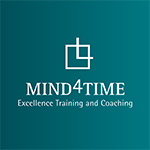Puerto Escondido, MEXICO
On the previous article, I wrote about Projects and Actions, two very important concepts that form the building blocks of activity. Now let's see how they work together.
A powerful couple
The power you get from these pair of units - Projects and Actions -, is the combination between the finishing line and the next step. On your lists there will be items like:
'Project: Taxes | Next action: collect receipts in a folder'
'Project: Marketing Campaign X | Next action: send budget for approval',
where Taxes can mean "process submitted" and Marketing Campaign may stand for something like "final brochure printed and sent to stores".
On the one hand, you'll always know where you are heading, holding the mental picture of the successful outcome. On the other hand, you keep deciding what is the next trackable activity that will receive your execution focus, time and resources.
Helicopters and Perspectives
The way you divide your activity in these chunks and decide what is the Project and what is the Action, can be quite dynamic and progressive, there's no fixed rule. You may feel that your 2 year Project "build a new house" needs to be chunked in sub-project "phase 1: buy property". Reversely, you may feel that your next Action "call real estate agent" doesn't really have to be chunked down into "find my contact list".
As a rule of thumb, you might want to think of Projects within a 3 months range and Action is whatever you think will happen next and fits your todo-list.
Keep it meaningful. By meaningful I mean that your Project scenario is close enough so you find it credible and possible to visualize, and your next action is detailed enough so you know exactly what you are going to do next, making sure you're not being tricked by pending decisions about it.
Zooming teams
This is specially important for teamwork and status reporting.
Imagine a big software company with several layers of hierarchy: admin, divisions, projects, and teams of programmers. The Project and Actions units that guide the programmers work and report will probably have little (if any) meaning for the Head of Division. And the reverse is also true: you don't expect the programmer to be really interested in the 10 year stock market forecast at his daily projects list. Different perspectives!
On the other hand, you certainly want the programmer to feel some alignment of contribution to the long term global purpose and mission of the company, and you surely want the Executive to have things as specific as "call Ann" on her to-do list. It's really a question of balancing vision with action, and those are highly elastic, and dynamic throughout the hierarchical levels.
Super systems?
Rather than building a super drill-down system shared by everybody, focus on making sure each team and individual, at their own specific level of control, can, at any time, hold this couple of units:
1) a clear view of a project unit: a credible horizon to work towards,
and
2) a specific enough next-action unit: to guide their immediate focus, and allow done/not done reporting.
This article was published in the 18th edition of Productive Magazine (adapted)





I prefer to use tags.
Tags can indicate any number of things:
1. What project(s) the task applies to
2. What the status of it is (I distinguish "Action" from "Next Action")
3. What the priority / context / energy level etc. is for this item
Each item can have many tags and I think most organization systems have tags (I use labels in gmail for example)
For example:
- Item 1 [projects/Project1] [Next Action]
- Item 2 [projects/Project1] [Action]
- Item 3 [projects/Project2] [Action]